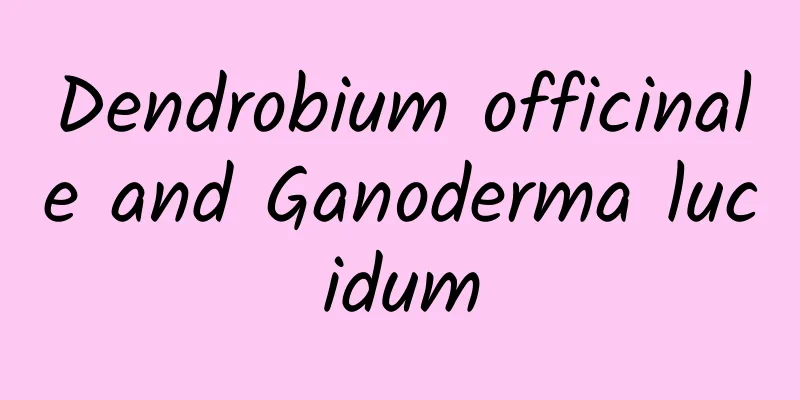Effects and functions of Pinellia ternata fruit

|
Do you know what the fruit of Pinellia ternata is? If you know, do you understand the effects and functions of the fruit of Pinellia ternata? As a traditional medicinal material, what regulatory effects does the fruit of Pinellia ternata have on our body? We will analyze them one by one for you below. [Alias] April child, wild cherry, Tangtai, wheat grain ball, goat milk child, dregs, stone roller, reed child, and Niutuo. [Source] Medicinal material source: The fruit of the plant Pinellia ternata of the Elaeagnaceae family. [Original form] Pinellia ternata is a deciduous shrub, up to 3m tall. Usually without thorns, rarely with thorns on old branches; young branches often have dark brown scales, the scales on old branches fall off, and the branches become dark brown and shiny. The petioles are simple and alternate, rusty, 4-6mm long; the leaves are membranous or papery, elliptic or ovate to ovate-oblong, 3-7cm long, 1.2-4cm wide, entire, obtuse or acute at the apex, broadly cuneate or rounded at the base, with stellate hairs and silver scales when young, gradually falling off later, grayish white below, densely covered with silvery white and scattered with a few brown scales, white flowers, often solitary in the leaf axils at the base of new branches; the perianth tube is tubular, 5-6.5mm long, 4-lobed at the upper part, the lobes are broadly ovate, and sparsely pubescent on the inside; there are 4 stamens, inserted slightly below the throat of the perianth tube, with extremely short filaments and small anthers; the style is erect, glabrous, slightly extending out of the throat of the perianth tube, and not longer than the stamens. The fruit is oval, 12-14 mm long, densely covered with rusty scales, and red when ripe; the fruit stalk elongates after flowering and is 1.5-4 cm long. The flowering period is April-May, and the fruiting period is June-July. [Habitat distribution] Ecological environment: grows on sunny hillsides and in bushes. [Chemical composition] The mature fruit contains pigment: lycopene, and contains more sugar. The seeds contain fatty oil. The flowers contain volatile oils. 【Nature and flavor】 Light; astringent; warm 【Functions and indications】Relieve asthma; stop dysentery; promote blood circulation and reduce swelling; stop bleeding. It is used for asthma, dysentery, traumatic injury, rheumatic joint pain, hemorrhoid bleeding, swelling and infection. [Usage and Dosage] For oral use: decoction, 15-30g. 【Excerpt】 Chinese Materia Medica The above article introduces the functions of Pinellia ternata fruit. I hope it will be helpful to you in your life. But it is important to note that you should not randomly combine it with other foods. You should consult a professional before making a decision. |
<<: Effects and functions of Pinellia ternata leaves
>>: The efficacy and function of stem flower elata
Recommend
The efficacy and function of poppy shell
For Chinese medicinal materials such as poppy she...
Science illustration | Ultra-deepwater pile hammer allows offshore platforms to gain a firm foothold
...
From a maid to a female astronomer, she made the professor's complaint "My maid does a better job than you" come true... | Women's Day
Long before computers were invented, the word &qu...
The efficacy and function of butterfly fruit
There are many kinds of common Chinese medicinal ...
Cat petting has this effect? Bacteria on cat skin may treat human skin infections
Raising cats has become an important part of the ...
Medicinal value of daylily
What are the medicinal values of daylily? It is ...
The largest animal, the blue whale, can swallow dozens of tons of krill in one gulp, but it cannot swallow a person.
The largest animal that has ever appeared in the ...
Technology News | Japan uses supercomputer to predict six quark particles
【Today’s cover】 With the arrival of winter, Tangg...
What is the difference between eggs that cost a few yuan and eggs that cost dozens of yuan? Are red-skinned eggs more nutritious?
Expert in this article: Wang Silu, National Senio...
Children can't run after congenital heart disease surgery? The truth is...
There are many opinions on whether children can e...
How big is the e-commerce market potential in this Middle Eastern country?
Like other industries around the world, e-commerc...
It's time to wear down jackets: a complete guide to buying, matching and cleaning them in one go
...
What are the ways to eat Jiaogulan?
In life, everyone always pays special attention t...
Popcorn dropped from a roadside tree? Don’t eat it!
Now is the leaf-viewing season in southern my cou...
A look into the 2022 Nobel Prize: How did humans come into being?
At 11:30 a.m. on October 3, 2022, local time in S...









